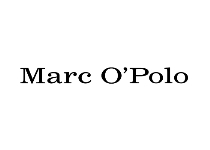Marc O'Polo
Accessories / Apparel / Bags / Denim / Jewelry / Shoes / Swimwear / Underwear & Lingerie
Marc O’Polo is a German clothing brand of Swedish heritage. In 1967 Marc O’Polo was established in Stockholm by Rolf Lind, Göte Huss, and Jerry O’Sheets. One year later, Werner Böck opened the Germ...
Marc O’Polo is a German clothing brand of Swedish heritage. In 1967 Marc O’Polo was established in Stockholm by Rolf Lind, Göte Huss, and Jerry O’Sheets. One year later, Werner Böck opened the German branch in Stephanskirchen, a village near Rosenheim. In 1997 Böck founded "Marc O'Polo International GmbH", responsible for the design, production, marketing and distribution. The company headquarters was also moved to Stephanskirchen. All European customers are supplied from a central warehouse there. The fashion collections are sold by 1,600 retailers, 540 shop-in-shop partners, 60 franchisees and 38 mono-brand stores. In 2005 the company had sales of 185 million euro. In business year 2007 to 2008, the company along with about 1,025 employees around the world had sales of 288 million euro. The fiscal year 2011/2012 brought the company the highest turnover increase with 9.2% (404 million euro profit). An estimated 71% of the sales is accounted for in Germany. Currently, the share of the total sales is divided roughly into 25% retail, 11% franchise, 27% own stores and 37% shop-in-shops. Today, brand recognition is around 77%. The company’s largest 900 square meters mono-brand store is in Munich in the shopping mall Fünf Höfe. The brand Marc O'Polo, as a casual lifestyle brand in the luxurious division is expected to expand through further innovations. Many models like Marianne Schröder for example, display the brand in fashion shows. Originally, the brand started out with a unisex sweatshirt in dark blue, beige, and 23 other colors with the company logo on the back. With forty plus years of history, Marc O'Polo is now worn by women, men of all ages including kids. In addition to the two seasonal collections fall/winter and spring/summer, there are also two theme collections. Portofino in spring and St. Moritz indicated the beginning of the skiing season. Its own eye-wear, fragrance, shoe line and home accessories completes the picture. The collections however, do not have the same colorful buoyancy as their US competitor Tommy Hilfiger. Instead different shades of earth tones, gray, blue, and black are featured. The clear, narrow lines emphasize the puristic character. Werner Böck describes his company's fashion philosophy as 'timeless and modern'. In 2009, Marc O'Polo was presented with the prestigious Forum Award by the fashion trade journal TextilWirtschaft.Brand Details
Founder
Jerry O'Sheets
Brand Strategy
Market segment
Bridge
Core business
Apparel
Targets
Men, Women, Kids
Marc O'Polo Latest News
Marc O'Polo and TENCEL™
Marc O'Polo teams up with TENCEL™ to introduce a co-branded summer apparel collection ideal for travel and vacation.
Marc O’Polo Plans to Expand in Canada and Europe
Marc O'Polo is planning to expand its legacy across Canada and Europe by establishing new strategies in shopping experiences and opening new showrooms.
Marc O'Polo Financial Report 2024
Last fiscal year ended on May 31, 2021
